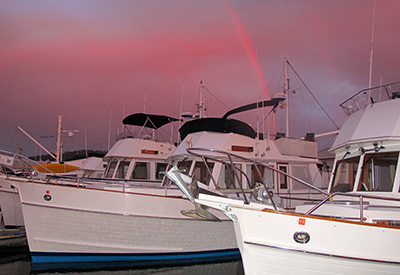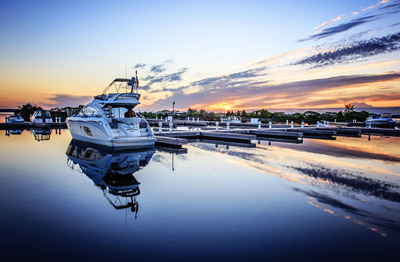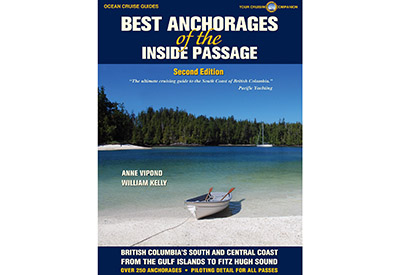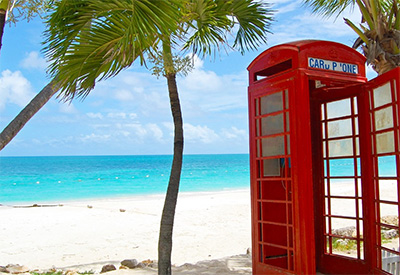Grenada of Land and Sea

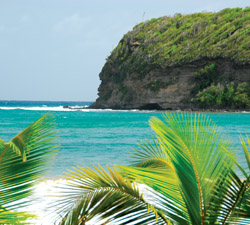 Just off the headland of Grenada’s True Blue Bay a huge rock bathes in the Caribbean Sea. It is thirty feet high and ruggedly beautiful. Wind has etched lines upon its face; the sea has softened its rougher edges.
Just off the headland of Grenada’s True Blue Bay a huge rock bathes in the Caribbean Sea. It is thirty feet high and ruggedly beautiful. Wind has etched lines upon its face; the sea has softened its rougher edges.
We sail past in the Bavaria 46′ we’ve chartered from Horizon Yacht Charters, gazing out toward waves hurling themselves against the rock, shattering into a million pieces.
The mood of the sea changes; it seems to embrace the land. Now gentle waves nuzzle the barnacle-crusted rock. And the land basks in the attention.
Then the sea – a fickle suitor at best – changes tack again. The waves renew their assault, sending up a white curtain high above the jagged landform.
Through an opening between the rock and the shore another boat heads west, tossed about on following seas. Its mast disappears then reappears as it rides the crest of a white-veined wave.
We motor south, passing the rock and the other boat, leaving off our stern a vista of pastel-painted houses, of the lime- and lemon- and lavender-painted rooms of True Blue Bay Resort, of the orange-tiled roofs of the university facing seaward.
And the open sea lies dead ahead. It is every shade of green you could imagine, every shade of blue. But its sheer beauty belies its darker moods.
“Lumpy today,” admits James Pascall, proprietor of Horizon Yacht Charters. He’s graciously agreed to sail with us for our first day out. Glorious as the sailing here is, it is not for beginners.
“Care to estimate the wave height?” I ask. My hand, white-knuckled, clings to the grab rail above the companionway hatch.
“Good fifteen feet.”
“And the winds?”
“Could be twenty-five.” He grabs the wheel as a sudden gust hits us, sending white spray hurtling from the crest of one particular wave. He bounds forward to ease the foresail sheet. Then he bears off a few degrees. “More in the gusts.”
Another wave crashes into the bow and now a cirrus-painted sky frames the foredeck. We plummet into the trough with a bone-jarring thud.
“Flat bottom, this boat,” says Pascall. “She tends to feel the waves.”
We have the engine going even though it’s in neutral and we’re only flying a foresail. And we’re still going six, six-and-a-half knots.
The sea’s assault continues, pounding the shore, exploding in white hissing foam on a series of reefs that are land’s first line of defense.
In a sudden epiphany I completely understand these mercurial sea moods. The onslaughts are no amphibious invasion, but determined if unsubtle acts of love. They are the attentions of a suitor suffering from ineffable longing, if not ribald lust.
For a procession of gentle hills, graceful as the bridesmaids at a wedding, heads north off our port beam, growing into mountains, decorated by the orange glow of flamboyant trees, the red spatters of Poincianas.
If Grenada were a woman, I would be courting her myself. But she is but one character in this epic tale, for this is a story of both land and sea.
It is a theme woven through Grenada’s history island, emerald and aquamarine threads that add body to the island’s lush texture.
Columbus first saw the place around 1498 and named it Concepcion Island. But his seafaring crew – more romantic and moved by its sheer beauty – called it Granada. The reference was to the rolling emerald hills of their Andalusian homeland. The name – later Gallicized to Grenada – stuck.
And the intervening years bear further testament to the lure of both land and sea – and to a cavalcade of suitors smitten with her charm.
We sail into St. George’s Harbour and drop the hook in the horseshoe lagoon in the island’s capital, dominated by the stone bastions and implacable walls of Fort George. But we also sail past Point Salines, past the white crescent of Grand Anse Beach, we make for Moliniere Point hard by Halifax Harbour, past Gouyave and head for Sauteurs. And somewhere during that passage Happy Hill falls away off our starboard quarter.
A pepperpot of names spices up a tale reflected in history, in the images we soak up, in the back stories of the Grenadians themselves.
For on Grenada land and sea are inextricably linked.
One day we stand atop a cliff decorated by palms and raucous vegetation near an old church at Sauteurs. An obelisk carved by wind and water reaches up toward us from a boulder-strewn beach. Angry surf thunders below.
The story goes that in 1651 a few dozen Caribs who’d survived French domination chose to perish in the sea rather than share their land with the conquerors, hurling themselves from this very precipice.
“There is some evidence they actually escaped in boats to the north under cover of darkness,” says the girl at the interpretive centre. It is a revelation that may dampen some of the romantic fervor, but it is a legitimate plot point in a tale of land and sea.
And it offers further evidence of a people torn between two lovers.
One day on the boat we pass two boys. They can’t be more than ten years old. They bob up and down on the waves in a wooden orange boat no bigger than our dinghy. A fishing line dangles from the bow, another from the stern. The boys are in their element.
Off the waters in the south we glide past a cliff rising up a hundred feet from the waves. A makeshift wooden ladder clings to its pockmarked face – suspended eerily between land and sea.
During a land excursion we follow a pickup truck down a winding road so overgrown with vegetation we could be a thousand miles from the sea. There are no sea sounds here: just the wind whispering in the bamboo groves. No sea smells: just the perfume of bougainvillea.
But the land is not so far from the sea. The fellow in the back of the truck holds on with one hand as the rusty vehicle bounces over potholes. With the other hand he periodically lifts a conch shell to his lips and blows it mightily.
“Fish vendor,” says our guide. “Catch of the day has arrived.”
One night we anchor in the lagoon at St. Georges and venture north by land to a little village festooned with overhead Christmas lights. A massive sound system stands at the intersection of two streets, pumping out reggae so loud you can feel it in the pit of your stomach. The smell of frying fish, the aroma of barbecued lobster, the sharp tang of wood smoke, titillate the taste buds of the crowd of locals, who sip Carib beers and catch up on the week’s supply of gossip.
One street here in Gouyave runs parallel to the sea and another falls away gradually from the hills to a tiny beach where brightly painted fishing boats are lined up like runway models in a fashion show.
We have happened upon Fish Friday in a place they call ‘the town that never sleeps’.
“That’s because the fishermen come and go at all hours,” says the lady serving fish quiche under an awning sporting a sign that reads ‘Sister Toffie’s’.
People of the land and people of the sea.
On our first day on the water we tuck into a little bay in the lee of Hog Island. Here a weather-beaten shack snugs down under thatched roof and palm trees. A rudimentary bar lounges in the shade beside a beach.
“Locals often come out here on weekends,” says Pascall. “This is run by a Rasta guy. He puts on a great jump-up.” Then Pascall points into the bay, where a whole fleet of boats swing lazily at anchor, foreground to a background of emerald hills sporting an equal number of cactus, palms and flamboyant trees. “Cruisers like it too.”
Further west we turn north into Prickly Bay. It, too, is full of a congregation of boats. Many look like serious cruising vessels. Many look barely seaworthy.
An elderly gentleman wearing a great white beard and nothing else dives off the swim platform of his ketch. He emerges from the water, naked as the day he was born, and waves nonchalantly at us.
Pascall shakes his head and grins. “A lot of our charterers head north from here,” he says. “Carriacou, Tobago Keys, the rest of the Grenadines. We can help them do that – we offer a skipper up to Carriacou so you can check out your boat systems and brush up on your skills.” Then he pauses and glances around the anchorage. “But you could just gunkhole here too, couldn’t you?”
He then offers up some of the appeal of cruising here, the other anchorages tucked into the south coast, the fact that Grenada’s capital rings one of the most beautiful natural harbours in the Caribbean, the near constant winds which make for incredible sailing – sailing which appeals to racers as much as cruisers.
Come August Carriacou kicks into high gear with a regatta featuring wooden workboat races along with a multitude of shore-bound celebrations. Every January Grenada hosts a sailing festival that includes serious yacht-racing events, more serious parties and their own workboat competitions.
“Grenada was once the Mecca for Caribbean mega-yachts,” says Pascall. “I wouldn’t be surprised to see that day return.”
That’s partly because the devastation that Hurricane Ivan left in its wake three years ago encouraged both soul-searching and thoughtful new developments, particularly in terms of new marinas and the entire marine infrastructure.
“The issues the government deals with are our issues,” Pascall says in reference to the Marine and Yachting Association of Grenada. “They listen to our concerns and they do something about it.”
All of which makes for an appealing destination.
But its biggest appeal is the quality of the sailing and the fact that Grenada’s scenery is so beautiful it hurts your heart to look at it.
One day we roar up the west coast with a double-reefed main and a foresail small as a Brazilian bikini. Wind line after line chases us over teal waters as we heel over mightily, foam hissing on the low side. I crouch above the winch handles and grind for dear life on every tack, staring face-first into white water roaring past the toe rail. Andell David, the skipper we’ve hired for the last few days of our charter, rushes forward to let out the main as one nasty gust skims the water. We’re breaking nine knots.
We skim over surprisingly flat waters here, and are treated to views of forested mountains as we pass the towering heights of Fort George glaring down at us from the approaches to St. George’s, as we pass villages squatting seaside with palms dancing overhead, punctuated by ancient church steeples.
On a day like this I am torn: when it comes to sheer exhilaration the sea wins out. When it comes to spectacular beauty the point goes to land.
On our last night at dock the seas are uneasy. “My Mistress” strains anxiously at her dock lines.
The silhouettes of the hills to our north thrust skyward, backlit by a tapestry of stars laid out like a pirate’s ransom. Twinkling lights on shore, mirroring the stars, are motionless. Anchor lights on the boats moored to our south dance like Hawaiian maidens.
The wind whistles in the rigging. Tree frogs serenade us.
And there on an amber beach a hundred yards past our boat, like reunited lovers, at long last, land and sea meet in a passionate embrace.

